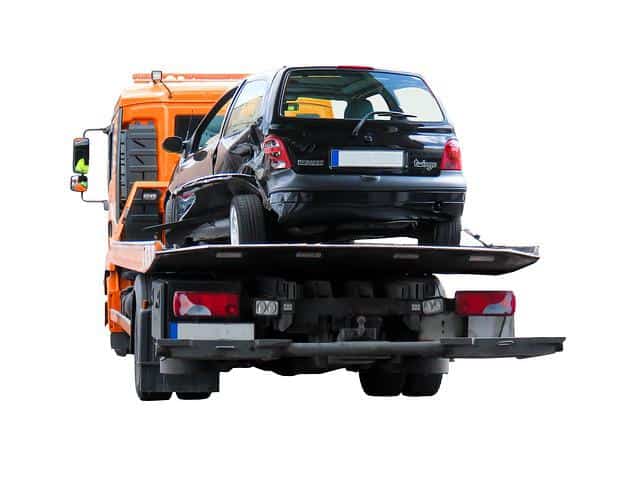
So, you got injured and you want to know what type of damages you are entitled to?
Personal injury cases can be messy, even for a seasoned attorney. Add trying to figure out what damages you can claim, and before you know it, you’re out thousands in potential compensation.
The unfortunate truth is that most personal injury cases (95% to be exact) are settled before they go to trial. This means 95% of people who are injured don’t fully understand what damages are and what they can truly claim.
That’s precisely why you need to hire a personal injury attorney with experience in maximizing every type of damage possible. Professionals know which damages apply to your case and how to ensure you get what you deserve.
Let’s take a look at exactly what damages you can claim and how much you could be eligible to recover…
Table of Contents
- What Are the Three Types of Personal Injury Damages?
- Economic Damages: The Easy-to-Calculate Stuff
- Non-Economic Damages: The Hidden Value
- Punitive Damages: When Things Get Serious
- How Much Can You Actually Recover?
What Are the Three Types of Personal Injury Damages?
Personal injury damages are not one general pot of money to make you whole.
Here’s how it actually breaks down: Personal injury damages are divided into three categories that serve completely different purposes.
There are three types of damages: economic, non-economic, and punitive.
Getting an understanding of each one is the difference between being fairly compensated and leaving money on the table.
Economic damages
- Your actual financial losses
- Receipt damages
Non-economic damages
- The impact of the injury on your life
- Pain and suffering
Punitive damages
- Punishment for really bad behavior
Each type of damage is calculated differently, has its own legal requirements and limitations, and is subject to state laws.
The vast majority of people only focus on economic damages. Why? Because economic damages are the most obvious losses to calculate.
But here’s the thing…
Non-economic damages are almost always the most significant part of every personal injury settlement, and that’s especially true in the more serious injury cases. Non-economic damages are where the most money lies, and it’s money a lot of people are leaving on the table.
Economic Damages: The Easy-to-Calculate Stuff
Economic damages are the easy part of your case. They cover every dollar you lost or will lose because of your injury.
I like to think of economic damages as your “receipt damages.” This includes everything you can prove by a hard piece of evidence like a bill, receipt, or employment record.
Here’s what’s covered under economic damages:
- Past and future medical expenses and bills
- Lost wages and earning capacity
- Property damage
- Rehabilitation costs
- Transportation to medical appointments
- Home modifications and accommodations for disabilities
- Any other out-of-pocket expenses you can prove
The best part about economic damages is that they are easy to prove as long as you have hard evidence to back them up.
The down part about economic damages is that even though they are easy to prove, they can be very complicated to calculate. This is especially true for future medical costs, lost earning capacity, and any other ongoing loss you may suffer.
For example, a 35-year-old man who gets a back injury may be forced to move from a physical job like construction work to a desk job. The difference in lifetime earnings potential in this situation can be tens of thousands of dollars or more.
If you hire the right legal team with a track record of success, they will know how to calculate and prove these losses to the insurance company or the court.
Non-Economic Damages: The Hidden Value
Here’s the thing most people don’t realize: Non-economic damages often end up being more valuable than economic damages.
The reason non-economic damages make up such a large part of any case is that they cover the ways your injury impacts your life that can’t be given a dollar value. Non-economic damages are for your pain and suffering.
Non-economic damages are what you get to be made whole again for:
- Physical pain and suffering
- Mental and emotional distress
- Loss of enjoyment of life
- Disfigurement or scarring
- Loss of companionship
- Inconvenience and life changes
But here’s the challenge: The challenge with non-economic damages is that they are subjective and much more difficult to prove.
Courts will either use the multiplier method or the per diem method to calculate your non-economic damages. With the multiplier method, your economic damages are multiplied by some factor, usually between 1.5 and 5, depending on the severity of your injuries.
If you’re interested to learn more, average settlements range from $10,000 to over $75,000 depending on the unique facts of the case, with non-economic damages making up the lion’s share of higher settlements.
The key to maximizing non-economic damages is documentation. Keep a journal of your pain, get treatment for mental health impacts, and keep track of the ways your injury is affecting your ability to do normal daily activities.
Punitive Damages: When Things Get Serious
Punitive damages are different from economic and non-economic damages. They are not there to compensate you for any losses. Punitive damages are about punishing the person who caused you harm.
Punitive damages only apply when the defendant’s behavior was especially bad. This could be behavior that was reckless, intentional, or grossly negligent.
The classic example of punitive damages is a drunk driving accident. Driving drunk and causing an injury is so reckless and intentional that the court wants to punish the defendant.
Other examples are intentional acts like assault or battery or a company knowingly selling a dangerous product.
The bad news…
Punitive damages are not available in all cases or all states. Punitive damages are subject to a number of restrictions, with many states having strict requirements that must be met before punitive damages can be awarded. The defendant’s insurance policy may also cap the amount you can receive.
On the positive side, when they are available and awarded, they can be substantial. We are talking potentially in the millions in the most egregious cases of corporate misconduct or acts that were truly reckless.
How Much Can You Actually Recover?
The honest answer is… it depends.
On far more factors than most people realize.
Your total compensation will depend on:
- The severity of your injuries
- The impact on your life and work
- The defendant’s insurance policy
- State laws and damage caps
- Skilled legal representation
In some states, there are caps on non-economic damages, and in others, you can take your case in front of a jury and allow them to award you whatever they think you deserve. Minor injuries can net you a large settlement if the injury has a significant long-term impact.
Did you know the exact same injury can be worth hundreds of thousands of dollars more or less depending on how the attorney presents your case in court?
At Ravid & Associates, we have seen time and time again that personal injury attorneys who are familiar with the ins and outs of maximizing each type of personal injury damage available can increase your final settlement or verdict by hundreds of thousands of dollars.
Making Sense of It All
Understanding personal injury damages is one thing, but the goal is to maximize every type of damage possible for your situation.
The three types of personal injury damages work together to make you whole again. Economic damages pay your bills and make up for property damage, non-economic damages compensate you for the pain and suffering, and punitive damages (when applicable) punish egregious behavior.
Here’s the bottom line: most people significantly underestimate the value of their case, especially the non-economic component. Insurance companies count on this and make low-ball offers because they know you will take the money.
Don’t fall for it.
The difference between doing it on your own and hiring experienced legal representation could be hundreds of thousands of dollars.
You have been through enough with your injury. Make sure you get every dollar you’re entitled to recover.







